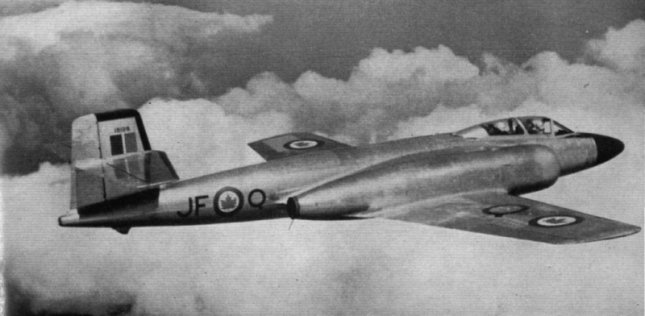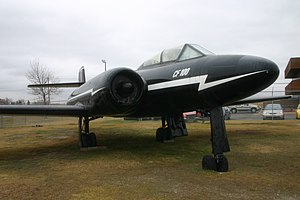Avro Canada CF-103
The Avro Canada CF -103 was the project of the Canadian manufacturer Avro Canada in the early 1950s, an interceptor, and to replace the CF -100 Canuck in the RCAF.
History and construction
Even before the prototype of the CF -100 flew, Avro Canada conducted studies for an advanced variant of the aircraft, as the RCAF was looking for an interceptor for the supersonic. By identified in the CF -100 restrictions suggested the chief engineer John Frost, a number of improvements, such as thinner swept wings. In December 1950, the Avro Aircraft design office began with the design work, including the hull structure of the CF -100, with new swept wing and a new tail.
Frost saw the new design as an intermediate solution between the CF -100 and the advanced C -104 project. The significant changes to the wing structure were the airfoil, the decreasing airfoil thickness, and the 42 -degree sweep of the leading edge. This almost resulted in a delta wing. Despite the planned installation of more powerful engines, and the new concept, there were computationally only slightly better performance compared to a series CF -100, namely only Mach 0.95 to Mach 0.85 over the series CF -100 Mk.2 and Mk.3.
1951 was the Canadian Department of Trade and Commerce an order for two prototypes and a static fracture cell under the project designation CF -103. A wooden mock-up was built, then started with the prototype. The first flight was planned for the summer of 1952, but then moved to the middle of 1953. With progression of the Cold War, urged the Canadian government that the production of the latest CF -100 versions, and the development of their improved variants, takes precedence over the CF -103 had, which ultimately led to the termination of the project in December 1951.










